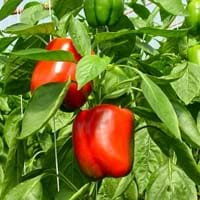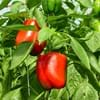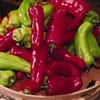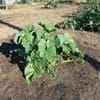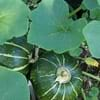Life Span
Annual
Perennial
Type
Vegetable
Sedge or Rush
Origin
Hybrid origin, Mexico, Central America, South America
Japan
Types
it is a type of bell paper
Not Available
Habitat
Not Available
Lawn, shaded fields, Shaded sites
USDA Hardiness Zone
Not Available
5-10
Sunset Zone
A1, A2, A3, H1, H2, 1a, 1b, 2a, 2b, 3a, 3b, 4, 5, 6, 7, 8, 9, 10, 11, 12, 13, 14, 15, 16, 17, 18, 19, 20, 21, 22, 23, 24
3a, 3b, 4, 5, 6, 7, 8, 9, 14, 15, 16, 17, 18, 19, 20, 21, 22, 23, 24
Habit
Upright/Erect
Clump-Forming
Flower Color
White, Yellow, Green
Tan
Flower Color Modifier
Bicolor
Bicolor
Fruit Color
Red, Green
Brown
Leaf Color in Spring
Green
Dark Green, Gold
Leaf Color in Summer
Green
Dark Green, Gold
Leaf Color in Fall
Green, Black
Dark Green, Gold
Leaf Color in Winter
Green
Dark Green, Gold
Leaf Shape
Elliptic
Subulate
Plant Season
Spring, Summer, Fall
Spring, Summer, Fall, Winter
Sunlight
Full Sun
Partial shade, Full Shade
Growth Rate
Medium
Medium
Type of Soil
Loam
Clay, Loam, Sand
The pH of Soil
Neutral
Acidic, Neutral
Soil Drainage
Well drained
Well drained
Bloom Time
Indeterminate
Late Spring
Tolerances
Drought
Drought
Where to Plant?
Container, Ground, Pot
Ground, Pot
How to Plant?
Seedlings, Transplanting
Rooted stem cutting, stem tip cuttings
Plant Maintenance
Medium
Medium
Watering Requirements
Do Not over Water
Needs more water during establishment, Water Deeply, Water in morning to avoid prompting diseases, Water in the early morning hours
In Summer
Lots of watering
Lots of watering
In Spring
Moderate
Moderate
In Winter
Average Water
Average Water
Soil pH
Neutral
Acidic, Neutral
Soil Type
Loam
Clay, Loam, Sand
Soil Drainage Capacity
Well drained
Well drained
Sun Exposure
Full Sun
Partial shade, Full Shade
Pruning
Remove damaged leaves, Remove dead branches, Remove dead leaves
Prune to control growth
Fertilizers
All-Purpose Liquid Fertilizer
All-Purpose Liquid Fertilizer, Apply N-P-K, Less fertilizing
Pests and Diseases
Red blotch
Disease free, Insects, Red blotch
Plant Tolerance
Drought
Drought, Rocky Soil, Shade areas, Variety of soil types, Wet Site
Flowers
Insignificant
Insignificant
Flower Petal Number
Single
Single
Foliage Texture
Medium
Fine
Foliage Sheen
Glossy
Glossy
Attracts
Not Available
Aphids, Bugs, Mealybugs, Scale Insects
Allergy
Gastric, Hives, Skin rash
Not Available
Aesthetic Uses
Showy Purposes
Beautification, Borders, Ground Cover, Landscape Designing
Beauty Benefits
Not Available
Not Available
Environmental Uses
Air purification
Air purification
Medicinal Uses
cholesterol-lowering, Low calories, Vitamin C
Not Available
Part of Plant Used
Fruits
Leaves
Other Uses
Used As Food
Not Available
Used As Indoor Plant
No
Yes
Used As Outdoor Plant
Yes
Yes
Garden Design
Edible, Herb / Vegetable, Tropical
Container, Edging, Groundcover, Mixed Border, Rock Garden / Wall
Botanical Name
CAPSICUM annuum 'Big Bertha'( Grossum Group)
CAREX hachijoensis 'Evergold'
Common Name
Bell Pepper, Big Bertha Bell Pepper, Red Bell Pepper
Carex oshimensis
Carex morrowii
In Hindi
लाल शिमला मिर्च
Japanese Sedge
In German
Rote Paprika
japanische Segge
In French
Poivron rouge
Japanese carex
In Spanish
Pimiento rojo
juncia japonesa
In Greek
Κόκκινη πιπεριά
japanische Segge
In Portuguese
Pimentão vermelho
Sedge japonês
In Polish
Czerwona papryka
japoński turzyca
In Latin
Red Bell Pepper
Sedge Italica
Phylum
Anthophyta
Tracheophyta
Class
Eudicotyledones
Magnoliopsida
Family
Solanaceae
Cyperaceae
Clade
Not Available
Angiosperms, Commelinids, Monocots
Tribe
Not Available
Not Available
Subfamily
Not Available
Not Available
Number of Species
Not Available
Importance of Red Bell Pepper and Japanese Sedge
Want to have the most appropriate plant for your garden? You might want to know the importance of Red Bell Pepper and Japanese Sedge. Basically, these two plants vary in many aspects. Compare Red Bell Pepper and Japanese Sedge as they differ in many characteristics such as their life, care, benefits, facts, etc. Every gardener must at least have the slightest clue about the plants he wants to plant in his garden. Compare their benefits, which differ in many ways like facts and uses. The medicinal use of Red Bell Pepper is cholesterol-lowering, Low calories and Vitamin C whereas of Japanese Sedge is Not Available. Red Bell Pepper has beauty benefits as follows: Not Available while Japanese Sedge has beauty benefits as follows: Not Available.
Compare Facts of Red Bell Pepper vs Japanese Sedge
How to choose the best garden plant for your garden depending upon its facts? Here garden plant comparison will help you to solve this query. Compare the facts of Red Bell Pepper vs Japanese Sedge and know which one to choose. As garden plants have benefits and other uses, allergy is also a major drawback of plants for some people. Allergic reactions of Red Bell Pepper are Gastric, Hives and Skin rash whereas of Japanese Sedge have Not Available respectively. Having a fruit bearing plant in your garden can be a plus point of your garden. Red Bell Pepper has showy fruits and Japanese Sedge has no showy fruits. Also Red Bell Pepper is not flowering and Japanese Sedge is not flowering . You can compare Red Bell Pepper and Japanese Sedge facts and facts of other plants too.
